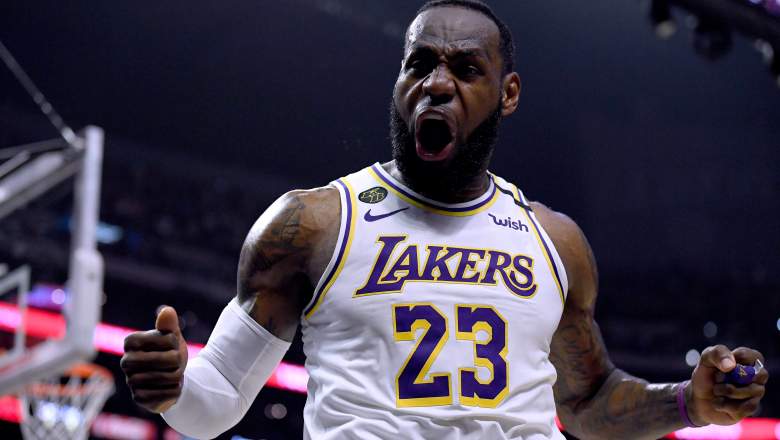
In all, LeBron James has more than 20 tattoos and considers each to be part of a chapter in the story of his life. In the interest of being as authentic possible, the makers of the NBA 2K series of video games have tried to replicate those tattoos in their depictions of James.
Four years ago, the artists who designed those tattoos—as well as those on other players depicted in the game—sued NBA 2K parent company Take-Two Software for copyright infringement, claiming their work was copyrightable art. In the complaint, the company said their tattoos are, “imprinted permanently upon the skin of humans, clearly stable and able to be perceived for much more than a transitory duration.”
But a federal judge this week disagreed on two major points, one which absolved Take-Two from copyright infringement violation in this specific case and one which set a precedent for future tattoo-copyright cases.
In the immediate case, New York U.S. District Court Judge Laura Taylor Swain ruled that the tattoos appearing in the video game were shown only incidentally, without clarity or consistency. They’re barely recognizable as the tattoos that are on players like James.
Swain wrote, “No reasonable trier of fact could find the Tattoos as they appear in NBA 2K to be substantially similar to the Tattoo designs licensed to Solid Oak.”
Lasting Impact in LeBron James Ruling
The second part of the case will have a more lasting impact. Swain essentially ruled that once a tattoo is inked onto the body of a player like James—or anyone, for that matter—it becomes part of their physical appearance. Because James and NBA players have a licensing deal with Take-Two media that includes use of their likeness, there can be no copyright infringement. The tattoo is part of the player’s likeness.
During the discovery phase of the case, according to The Hollywood Reporter, James stated for the record, “I always thought that I had the right to license what I look like to other people for various merchandise, television appearances, and other types of creative works, like video games.”
Swain’s ruling appears to back that up. She went further, too, finding in favor of Take-Two’s counterclaim that replicating the tattoos in the NBA 2K game should be considered fair use. Even if they were not shown so indistinctly, then, there would not be a copyright violation.
LeBron James’ Long Tattoo History
James has been known for his tattoos going back to his high school days at St. Vincent-St. Mary High School in Akron, Ohio. The school required James to cover up his tattoos while playing. In February of 2002, James had “Chosen 1” tattooed across his back, a reiteration of the headline on a Sports Illustrated cover.
He’s since added an array of tattoos, including one of his son, Bronny, as a baby on his left arm. On his other arm, he has the name of Bryce Maximus, his second son. He also has the words “Family” and “Loyalty” tattooed on either side of his rib cage with, “Witness” and “History” tattooed on either calf.
On his chest, James has a Boule Foundation symbol, a lion with a human head. The Boule Foundation is the first African American professional fraternity (Sigma Pi Phi), formed in Philadelphia early in the 20th century.
Most recently, in the days after Lakers legend Kobe Bryant and his daughter died in a helicopter crash in January, James had a depiction of a snake with the words, “Black Mamba Forever,” tattooed onto his thigh.
READ MORE: Carmelo Anthony on NBA Player Finances: ‘It’s Going to Get Really, Really Bad’
Comments
Judge Rules for NBA 2K in LeBron James Tattoo Copyright Case